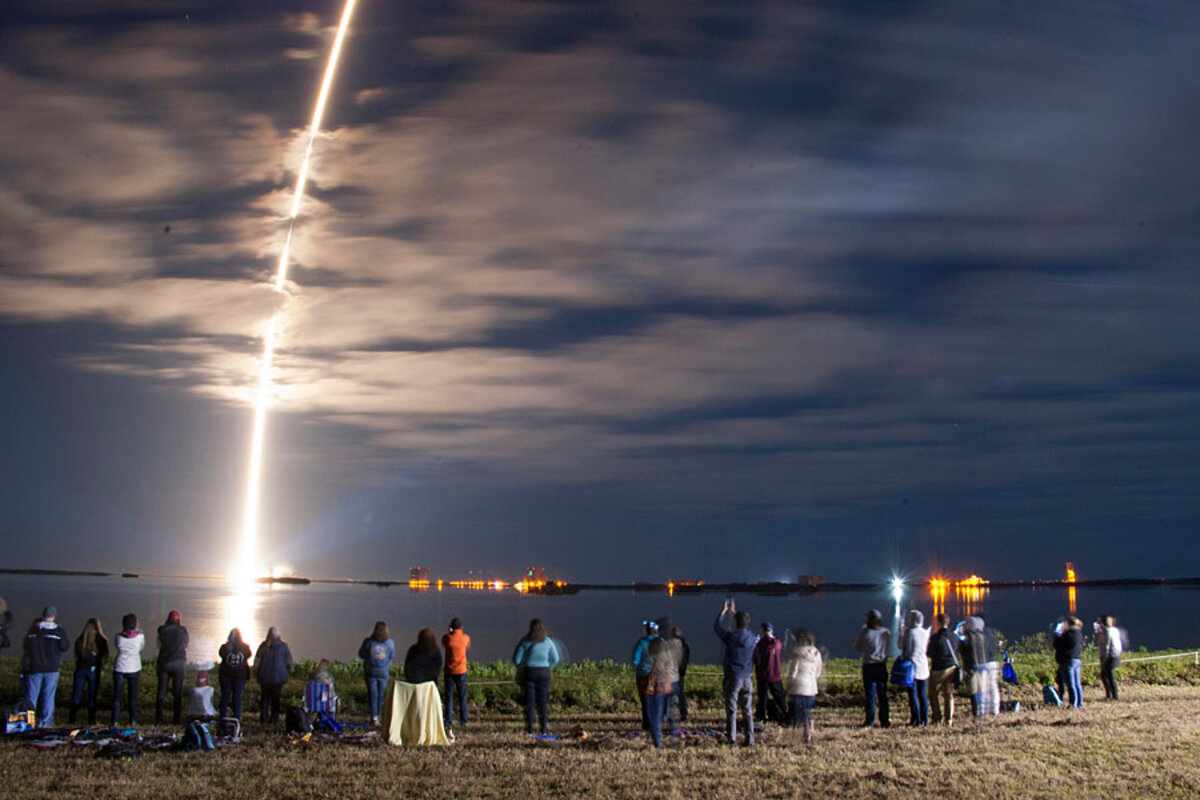Cargo delivery to space station brings 'gecko' feet, 3-D printer
Loading...
An unmanned Cygnus capsule is today, loaded with 7,500 pounds of cargo, including a number of tools and experiments to help astronauts at the ISS, and maybe some surprises, too.
Orbital ATK’s Cygnus capsule, named after the space shuttle Columbia’s commander, Rick Husband, rocketed into orbit at about 11 p.m. last night. It is expected to dock at the ISS by Saturday.
The capsule is carrying a number of interesting and useful items, as well as its usual cargo of food and other supplies. In addition to its Meteor and Strata-I instruments, which observe meteors and measure “space soil” or regolith, respectively, the spacecraft will deliver an array of consumable supplies, 29 small satellites, a 3-D printer, NASA’s new “gecko grippers,” and NASA’s first capsule-based fire test.
Many of the items were chosen for their utility. The is responsible for producing components for the ISS, and the 3-D printer that the Cygnus capsule will deliver on Thursday will upgrade the station’s 3-D printing capability significantly.
“The ability to manufacture on the ISS could enable on-demand repair and production capability, as well as essential research for manufacturing on long-term missions,” said Dan Huot at the Johnson Space Center in Houston in an e-mail to ���Ǵ���. “AMF could also allow for immediate repair of essential components, upgrades of existing hardware, installation of new hardware that is manufactured, and the manufacturing capability to support commercial interests on the ISS.”
The capsule will also carry a new reptile-inspired invention that could show up in living rooms across the country, if it proves its mettle in space first. Scientists hope that the new “” could one day help astronauts anchor themselves in space by mimicking the natural climbing mechanism geckos use to stick to vertical surfaces.
Geckos use tiny hairs on the bottoms of their feet to scale walls quickly. NASA has replicated the tiny reptiles' sticking mechanism by creating a synthetic material with similarly tiny hairs. It has already delivered good results in a microgravity test last year.
NASA jet propulsion engineer Aaron Parness, one of the leaders behind the project, has high hopes for the gecko grippers. The technology could even be used to “grab satellites” someday, Mr. Parness says. If they work on the International Space Station, gecko grippers could also become part of daily life.
"One can imagine hanging pictures or flat screen TVs on the wall without having to drill into your wall and when you want to move houses, you simply unstick the adhesive and put it somewhere else," .
Every Cygnus capsule is designed to burn up upon reentry to Earth’s atmosphere, and in the past NASA has used this opportunity to dispose of trash from the ISS. This capsule, however, has a special destiny. The Spacecraft Fire Experiment-I (Saffire-I) will help NASA understand how fire behaves in space.
“NASA’s objective is to reduce the risk of long-duration exploration missions, and a spacecraft fire is one of the biggest concerns for NASA and the international space exploration community,” said Jason Crusan, Advanced Exploration System director, in a .
The Saffire-I experiment will begin about a day after the capsule undocks from the ISS. The Cygnus flight operations team will put the capsule into low orbit, and then begin the experiment.
This first Saffire-I experiment will burn sample material that is about 16 inches by 37 inches. The sample material used in the experiment is designed to mimic material commonly found on the Orion spacecraft and the ISS.
“Currently, we can only conduct small combustion experiments in the microgravity environment of the space station. Saffire will allow us to safely burn larger samples of material without added risk to the station or its crew,” said Gary Ruff, NASA’s spacecraft fire safety demonstration project manager, in a press release. “Using the Cygnus cargo vehicle to host Saffire offers a unique opportunity to conduct beneficial spacecraft fire safety research using existing mission profiles.”
The capsule isn’t only bringing practical supplies, however. According to officials, the launch also includes a few surprises for the astronauts on board.
"Maybe they'll find a , who knows,” said Orbital ATK systems president Frank Culbertson.
NASA has set its next cargo . There are four to five commercial resupply missions planned in the next year, in addition to a Japanese space agency flight. The ISS keeps enough supplies to last four to six months without a resupply trip on board at all times.





